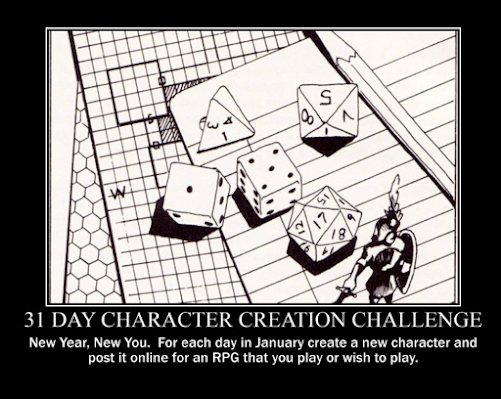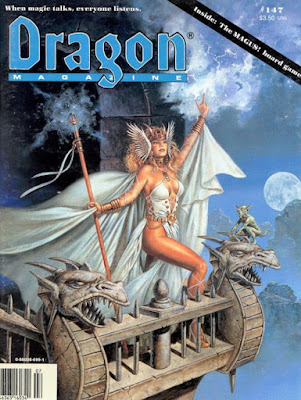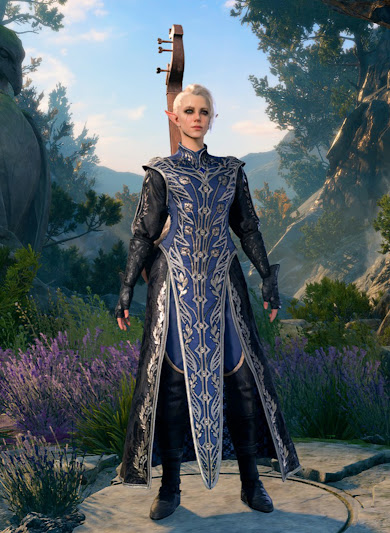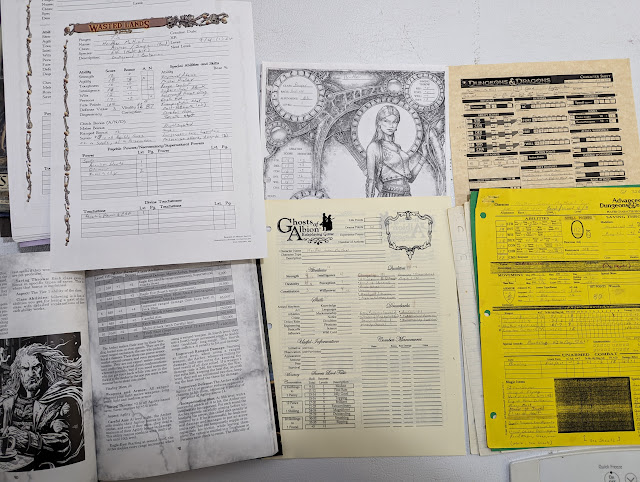Since 2001, Reviews from R’lyeh have contributed to a series of Christmas lists at Ogrecave.com—and at RPGaction.com before that, suggesting not necessarily the best board and roleplaying games of the preceding year, but the titles from the last twelve months that you might like to receive and give. Continuing the break with tradition—in that the following is just the one list and in that for reasons beyond its control, OgreCave.com is not running its own lists—Reviews from R’lyeh would once again like present its own list. Further, as is also traditional, Reviews from R’lyeh has not devolved into the need to cast about ‘Baleful Blandishments’ to all concerned or otherwise based upon the arbitrary organisation of days. So as Reviews from R’lyeh presents its annual (Post-)Christmas Dozen, I can only hope that the following list includes one of your favourites, or even better still, includes a game that you did not have and someone was happy to hide in gaudy paper and place under that dead tree for you. If not, then this is a list of what would have been good under that tree and what you should purchase yourself to read and play in the months to come.
—oOo—
 Dungeons & Dragons Adventurer Issue 1
Dungeons & Dragons Adventurer Issue 1,
Hachette Partworks Ltd. (£1.99)Definitely the cheapest entry on this list and likely the oddest, being the introduction to the world’s most popular roleplaying game that was also the first of some eighty issues of a
Dungeons & Dragons, Fifth Edition partwork. Later issues would rise in price (which is how a partwork works), but for your £1.99 you got an introduction to the game, four Player Characters, a mini-adventure, and a set of dice in an official
Dungeons & Dragons tin! The adventure would provide two hours’ worth of play, set in the Forgotten Realms in the same region as the then recent campaign,
Phandelver and Below – The Shattered Obelisk. It was the cheapest and simplest introduction to both roleplaying and
Dungeons & Dragons, Fifth Edition, that anyone could imagine. A perfectly sized and priced taster if you will. It marked two significant events in
Dungeons & Dragons history. It marked the first official gaming product for
Dungeons & Dragons from the United Kingdom in decades and it marked the return of
Dungeons & Dragons to the shelves of shops and newsagents since the demise of
Dragon magazine over a decade ago.
Dungeons & Dragons Adventurer Issue 1 literally put
Dungeons & Dragons back in front of the British public on the high street and it sold thousands.
 Pendragon Starter SetChaosium, Inc.
Pendragon Starter SetChaosium, Inc. ($29.99/£24.99)
The
Pendragon Starter Set marks the return of the best treatment of Arthurian legend in any roleplaying game and the return of one the best roleplaying games ever published. Designed to introduce players to the forthcoming
Pendragon, Sixth Edition, it presents ‘The Sword Campaign’, which places their characters, each a knight of realm, at the start of the reign of King Arthur and even has them witness the young squire pull the sword from the stone and be acclaimed king! As young knights in his service, they become involved in the turbulent early years of his reign as king after king, lord after lord, has to be persuaded that Arthur is the true King of the Britons. This will see them participate in tournaments, diplomatic missions, great battles, and even the affairs of Merlin, all ready to participate in the next part of
The Great Pendragon Campaign, one of the greatest campaigns ever published. The rules are clearly explained, including a solo adventure, and encourage the players to have their knights embrace knightly virtues and be the best that they can be by adhering to their personality traits, which can lead to great opportunities for roleplaying and interesting consequences when they fail or adhere to the poorly regarded personality traits. The
Pendragon Starter Set is a solidly packed introduction to a classic roleplaying game with books, dice, and cards enough for a gaming group to get started and play through multiple sessions of Arthurian legend and adventure.
 Threat Analysis 1: CollateralNightfall Games
Threat Analysis 1: CollateralNightfall Games ($50/£40)
Threat Analysis 1: Collateral is simply put, the bestiary and monster book for
S.L.A. Industries, the roleplaying game set in a far future dystopia of corporate greed, commodification of ultraviolence, the mediatisation of murder, conspiracy, and urban horror, and serial killer sensationalism. Its core setting of Mort City is beset by threats from within and without, and it is these threats that
Threat Analysis 1: Collateral examines in turn. There are Dream Entities which grow to embody and enforce the fears of the neighbourhoods whose realities they endanger, Cannibals and Carrien Pigs, Serial Killers whose exploits and murders are idolised and feared at the same time and put on primetime TV and even got their own sensational, soaraway
serial killer magazine, Ex-War Criminals, and even flora and fauna such as Ganggots and Sector Mutants. All of which is lavishly presented in glorious colour.
Threat Analysis 1: Collateral is fantastic monster book that not only surprises in its strangeness and its vibrancy, but also in its ability to bring the horror and the hell of Mort City to life.
 Dragonbane: Mirth & Mayhem RoleplayingFree League Publishing
Dragonbane: Mirth & Mayhem RoleplayingFree League Publishing ($55/£39.99)
2023 also saw the return of another classic fantasy roleplaying game, but this time, from Sweden rather than the USA. This is
Drakar och Demoner, Scandinavia’s first and biggest tabletop RPG, originally launched in 1982, but in 2023, published in English as
Dragonbane: Mirth & Mayhem Roleplaying. It is designed for fast and easy play, fast and easy set-up, and even as the world which the Player Characters explore—the Misty Vale, a hidden mountain valley until recently overrun by orcs and goblins—presents them with grim and brutal challenges, it has room for lighter moments round the table. The core boxed set comes packed with dice, cardboard standees, rulebooks, map, battle mat, and more. Not only does it include a solo adventure, ‘Alone in the Deepfall Breach’ (so the Game Master gets to play too) and not one, not two, but eleven adventures in the Dragonbane Adventures book! These can be played individually, but best work as a complete campaign in the Misty Vale. Plus, the artwork really is great. Lastly, let’s not discount the fact that one of the Player Character species is the Mallard and one of the Classes is the Knight, so the first fight round the table is going to be over who gets to play the Duck Knight!
 Marvel Multiverse Role-Playing GameMarvel
Marvel Multiverse Role-Playing GameMarvel ($59.99/£53.99)
Roleplaying returns to the Marvel Universe for the fifth time with this gorgeous treatment of the superheroes, supervillains, and super setting of the Marvel Universe. It includes over one hundred profiles of the heroes, villains, and minions (and sometimes in betweeen) of Universe 616, from Abomination, Agatha Harkness, and Agent Phil Coulson to Venom, Vulture, and the Winter Soldier, from America Chavez, Ant-Man, and Beast to Wasp, Wolverine (both Laura Kinney and Logan), and Wong. All with an eye to the Marvel Cinematic Universe, but derived from the comics rather than what is seen on screen. It gives the players a wide choice of characters to play and the Narrator a wide choice of villains to use, but the
Marvel Multiverse Role-Playing Game does not simply restrict the players and Narrator to its impressive who’s who and villains gallery of characters, but allows them to create heroes and villains of their own so that they can play out their own adventures and stories. The ‘616’ System is not quite as simple as it could be, but it is not too complex and it is thematic, and overall, the
Marvel Multiverse Role-Playing Game is a very accessible and playable version of a fan favourite superhero universe.
 Black Sword Hack: Ultimate Chaos EditionThe Merry Mushmen
Black Sword Hack: Ultimate Chaos EditionThe Merry Mushmen ($35/£25)
2023 was very much a year of the old returning, even if the old cannot exactly return due to licensing issues, for the
Black Sword Hack: Ultimate Chaos Edition wears its influences on its sleeve—or is that on its vambraces?—being a Swords & Sorcery roleplaying game inspired by the works of Michael Moorcock, R.E. Howard, Karl Edward Wagner, Fritz Leiber, and Jack Vance, but especially Michael Moorcock and his Eternal Champion, most notably Elric of Melniboné and Stormbringer. Using the simple mechanics of
The Black Hack, Second Edition,
Black Sword Hack enables a group to play out adventures tales of the constant struggle between the primal forces of the universe, to visit kingdoms of age and youth, to go to the planes beyond, and of course, enter into great pacts of a demonic, spiritual, forbidden knowledge, faerie, and twisted science nature. Mechanically, hanging over every Player Character is his or her Doom Die, which is degraded by fumbled rolls and uses of the gifts granted by the pact he has made with the forces of the multiverse. If the Doom Die is degraded too far, the Player Character becomes doomed and the multiverse comes calling for him. Backed up with lots of detail and supporting content that captures the feel and flavour of Michael Moorcock’s classic fantasy stories, the
Black Sword Hack: Ultimate Chaos Edition enables the Game Master to run a campaign in his style across the multiverse without infringing upon it.
 Japan – Empire of Shadows: A Call of Cthulhu sourcebook for 1920s Imperial JapanChaosium, Inc.
Japan – Empire of Shadows: A Call of Cthulhu sourcebook for 1920s Imperial JapanChaosium, Inc. ($65/£51)
Japan – Empire of Shadows: A Call of Cthulhu sourcebook for 1920s Imperial Japan does something no supplement in forty years of
Call of Cthulhu has ever done and that is to open up the Japan of the Jazz Age and make it somewhere to explore, roleplay, and investigate the activities and presence of not just the Cthulhu Mythos, but the mythos and folklore of the Japanese islands. It examines the reverence for modernity and antiquity Japan and explores how and why an investigation of Lovecraftian cosmic horror might be conducted, as well as looking at the role of numerous Occupations for
Call of Cthulhu, Seventh Edition and how they differ from the USA and the United Kingdom. At its heart is a set of three detailed and lengthy gazetteers, first of Tokyo, capital of Japan, then cities and locations across Japan, followed by the territories held by the Japanese empire, some of them for the very first time in roleplaying, let alone
Call of Cthulhu. This is all backed by a wealth of cultural and background detail, and then woven through the three gazetteers, are three narrative or scenario threads that will take the Investigators to Nan Modal on the island of Ponape, the island of Hokkaido, and occupied Korea to face Mythos threats old and new.
Japan – Empire of Shadows: A Call of Cthulhu sourcebook for 1920s Imperial Japan is an incredible piece of work and research, and both the best release on the Miskatonic Repository in 2023 and the best release for
Call of Cthulhu, Seventh Edition in 2023.
 Star Trek Adventures Utopia Planitia Starfleet SourcebookModiphius Entertainment
Star Trek Adventures Utopia Planitia Starfleet SourcebookModiphius Entertainment ($60/£45)
As a supplement for
Star Trek Adventures, the
Star Trek Adventures Utopia Planitia Starfleet Sourcebook does three things. First, it provides a history of Starfleet, second, it provides a means of creating starships for both Starfleet and civilian use, and third, it details over seventy Federation and Starfleet starship classes, space stations, and small craft. In the first part, it expands the basic three eras of
Enterprise,
Star Trek: The Original Series, and
Star Trek: The Next Generation to include
Star Trek: Lower Decks and
Star Trek: Picard as well as
Star Trek Online. In the second part, it lets the players design the starship that they want their Starfleet characters to crew and forge a legend with and the Game Master create ships as needed for her campaign. Lastly, in the third it brings to life the design and purpose of numerous classic starship models from the fifty years of
Star Trek history, allowing the players to pick one off the shelf if they wish or adapt it, or simply letting the
Star Trek read up about his or her favourite starship. This is a genuinely useful and interesting supplement, whether you play
Star Trek Adventures or are just a
Star Trek fan. Creating starships is really easy and the book is good read too. A definite must have sourcebook for the
Star Trek Adventures Game Master.
 Old Gods of AppalachiaMonte Cook Games
Old Gods of AppalachiaMonte Cook Games ($69.99/£59.99)
2023 was also the year of the podcast in roleplaying as several publishers turned to podcasts as inspiration for roleplaying games and roleplaying game supplements.
Old Gods of Appalachia is an eldritch horror fiction podcast set in an Alternate Appalachia where man was never meant to step foot in the mountains, where there are dark and bloody things in the deep of the hollers and presences beyond mortal understanding slumber under the ground. The roleplaying game adaptation uses the
Cypher System bring the hard scrabble inhabitants of the mountains and their fears and superstitions to life as they encounter the secrets, the desires, and the monsters of the Appalachians that they know should be best left alone. Theirs is a world almost like the twenties and thirties of our, but driven by hardship, horror, hope, and heart they find on their very doorsteps, in the forests, and deep in the mountains.
Old Gods of Appalachia draws the players and their characters into dark world of cosmic horror, but one that is very different to that normally seen in roleplaying and one very close to home. This is an excellent adaptation of the source material whose horror feels fresh and original.
 Around the World in 80 Games: A mathematician unlocks the secrets of the greatest gamesFourth Estate
Around the World in 80 Games: A mathematician unlocks the secrets of the greatest gamesFourth Estate ($30/£22)
2023 was a good year for books about board games, so it has been hard to just choose one.
Around the World in 80 Games by mathematician Marcus du Sautoy explores games from his speciality to examine how they underpin a wide range of games, some we played as children, some we play today, ranging in both complexity and from far around the world. In the process, he looks at the history of games and their backgrounds, why we play, and asks if mathematics can help us be better players. In the process, it takes in
Backgammon and the
Royal Game of Ur as well as
Scrabble,
Cluedo, and
The Game Life, before coming up to date with modern classics such as
Ticket to Ride and
Pandemic. It even explores
Dungeons & Dragons and non-games such as Mornington Crescent (though that might be getting just a bit silly and very, very British!). The result is an interesting examination of our hobby from another angle that gives a fresh perspective upon it.
 Cults of RuneQuest: The LightbringersChaosium, Inc.
Cults of RuneQuest: The LightbringersChaosium, Inc. ($39.99/£33.99)
The ‘Cults of RuneQuest’ line lays the foundation for
RuneQuest: Roleplaying in Glorantha, each entry focusing upon a particular pantheon of gods and goddesses and other beings and their associated cults. They are important because the worship of a god or goddess and membership is fundamental to the lives of almost everyone in the world of Greg Stafford’s Glorantha. It defines much of their outlook upon the world, who they ally with, who their enemies are—traditionally, whose values they embrace, and what magics and powers of the gods they can bring to any one situation and thus the play in the game. Essentially, the gods and the cults devoted to them and that the Player Characters worship and belong to, define much of who they are and what they can do, and so act in a fashion similar to the concept of character Classes in other roleplaying games.
Cults of RuneQuest: The Lightbringers is the first in the series to define the gods and their roles in society, focusing upon those that performed the famous Lightbringers Quest—Orlanth, Issaries, Lhankor Mhy, Chalana Arroy, Flesh Man, Ginna Jar, and Eurmal—as well as the other gods of the Air or storm pantheon. Each entry provides not just playable details to help create and player a character dedicated to that god and his cult, but further background, myths, and information that can be used to bring the role of the god, the cult, and the Player Character’s involvement into play.
Cults of RuneQuest: The Lightbringers provides a definitive and accessible treatment of the gods of the Air pantheon and the other supplements in the line, such as Cults of
RuneQuest: The Earth Goddesses, are equally as good.
 Lore & Legends: A Visual Celebration of the Fifth Edition of the World’s Greatest Roleplaying GameTen Speed Press
Lore & Legends: A Visual Celebration of the Fifth Edition of the World’s Greatest Roleplaying GameTen Speed Press ($50/£38)
You may not like the roleplaying game. You may not like the publisher. However, what you cannot deny is the influence and reach that
Dungeons & Dragons, Fifth Edition has had on the hobby and culture at large. As it turns ten, it is worth remembering that this edition has introduced millions of new players to the hobby, that it made the hobby an acceptable and even normal pastime when in the past it was sneered at and castigated, and that it was successful enough to get a Hollywood film made about it that respected the source material, was entertaining, and was anything other than dreadful. A sequel to the earlier and excellent
Art & Arcana: A Visual History,
Lore & Legends explores the development, history, and key points of the
Dungeons & Dragons, Fifth Edition in a very similar fashion, from its development via
D&D Next—the in-between edition—to its release in 2014 and through to today. It is written by the same team and consequently is both a good read and a visual delight, providing perspective on the world’s most popular roleplaying game.




































